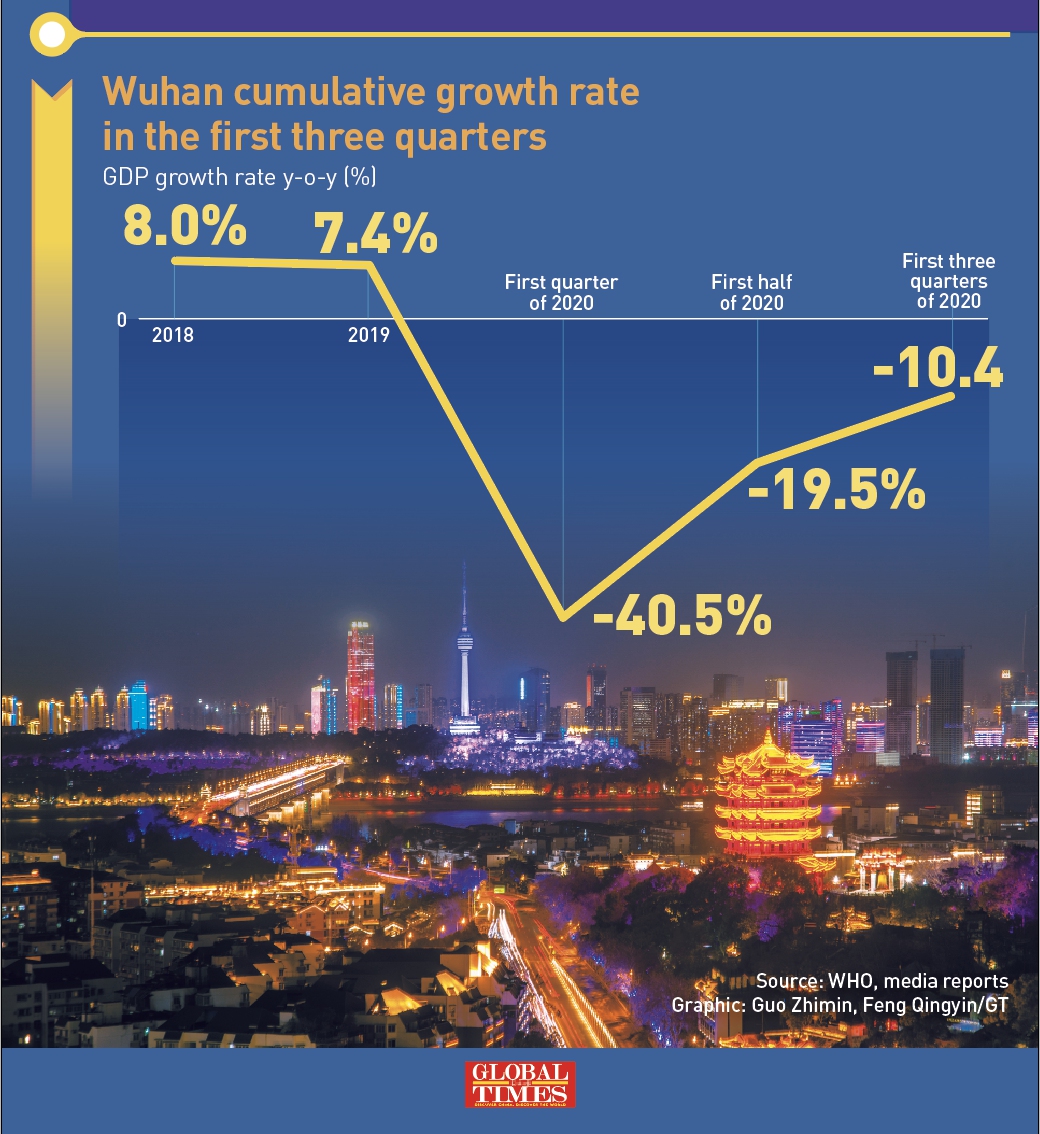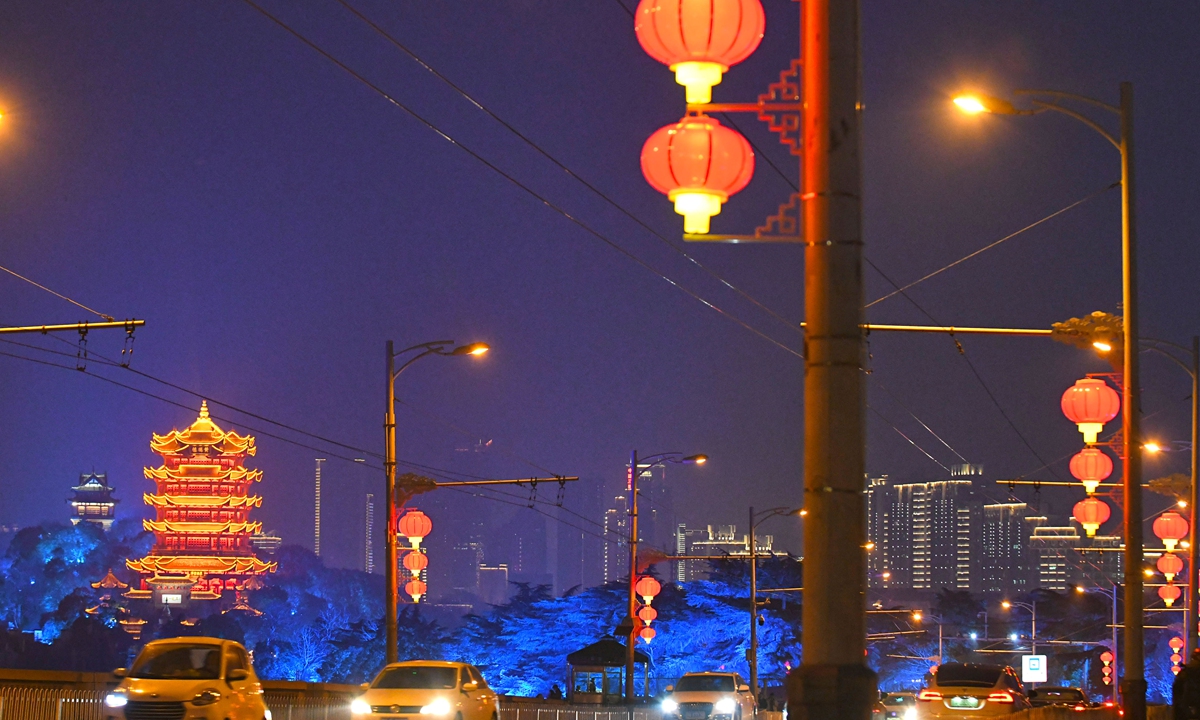A year ago, Wuhan, where the coronavirus was first reported in China, made a decision that has little parallel in modern society: to lock down the city of 11 million. During the 76-day lockdown, the city struggled to save lives and contain the virus, while maintaining the daily lives of ordinary people, a strategy that Chinese top epidemiologists said to "suffocate the virus within Wuhan." The city was therefore dubbed a "heroic city," whose sacrifice paved the way for the quick recovery of the country. When the city returned to bustling normal life in April, and Western countries, one by one, faced a more severe onslaught of the coronavirus, many Wuhan people, initially puzzled by their government's decision to seal off the city, became staunch supporters of the decision. A year has passed; what impression has the lockdown left on Wuhan people and what's their message for countries that once ridiculed Wuhan's lockdown?
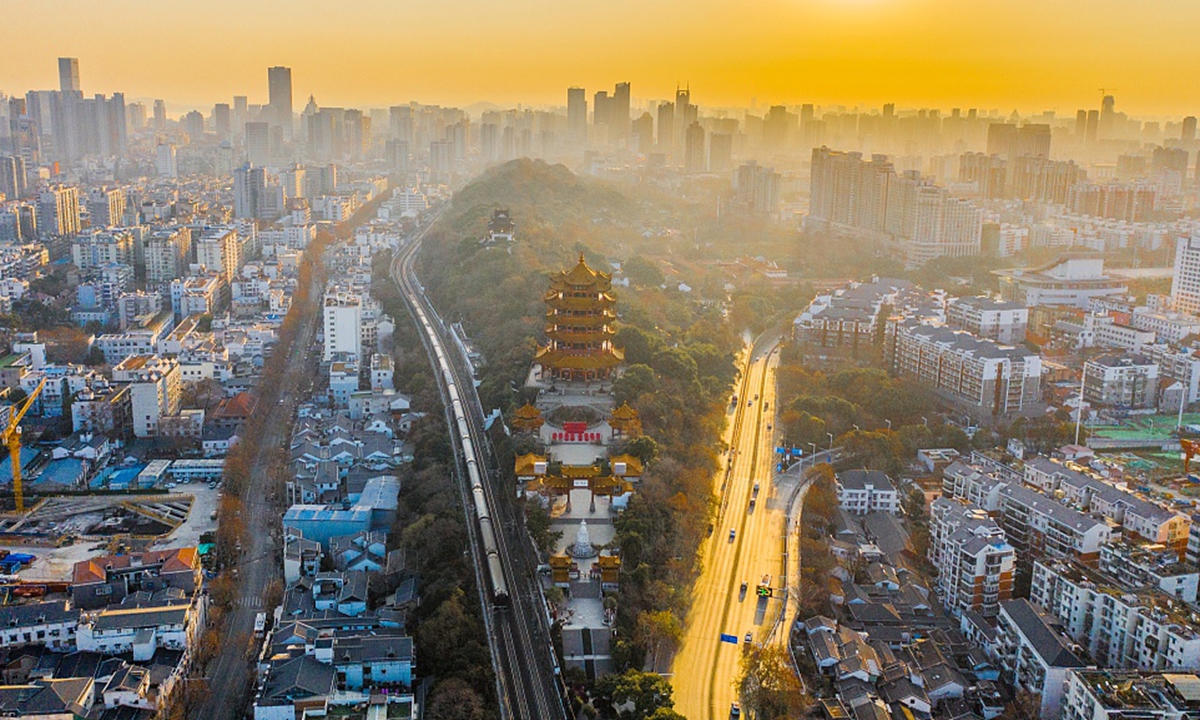
For most Wuhan residents, their memory of COVID-19, the pandemic that upended lives across the globe, started on January 23, 2020, the day the Wuhan government announced to seal off the city of 11 million people. The decision that has little parallel in modern society initially puzzled many locals, who soon turned into firm supporters of the strict management after seeing the city bounce back fast from its COVID-19 swoon while some Western countries, one-by-one, dragged their feet into coronavirus lulls.
Now, Wuhan's lockdown measures have become an enduring tool to quell the coronavirus worldwide. China, bouncing back fastest and strongest from the pandemic, has refined such management methods to a "precise virus prevention mode," where small outbreaks were contained one by one, with economic recovery barely affected. But countries like the US, which have been through several rounds of lockdowns, are still facing an onslaught of COVID-19, and the daily deaths of thousands almost became a new normal there.
One year on, what impression has the rare lockdown left on Wuhan people, and what's their message for countries that had ridiculed their choice?
Wuhan's Lily Wu went to the cinema on Friday to watch the movie Days and Nights in Wuhan. "I know it's sad, I know I am going to cry when I watch this film. But I really want to take another look at Wuhan back then."
The movie features the lives of ordinary people, from patients and medical staff to volunteers and community workers, when the coronavirus was wreaking havoc on the central Chinese city. The film was released on Friday, a day before the one-year anniversary of Wuhan's COVID-19 lockdown.
"Watching the movie is like tearing apart the scar that took a year to heal. The gloomy feeling was abundant in the cinema where almost the whole audience was wiping tears," said Wu.
She said that 11 million Wuhan people have 11 million different memories of the pandemic that ravaged the city at the beginning of 2020. Yet the date January 23 remains the pitch point of Wuhan people's collective remembrance of COVID-19, as it is the day the bustling city tumbled and paused for 76 days, and called on its people to start the arduous fight against the unknown monster.
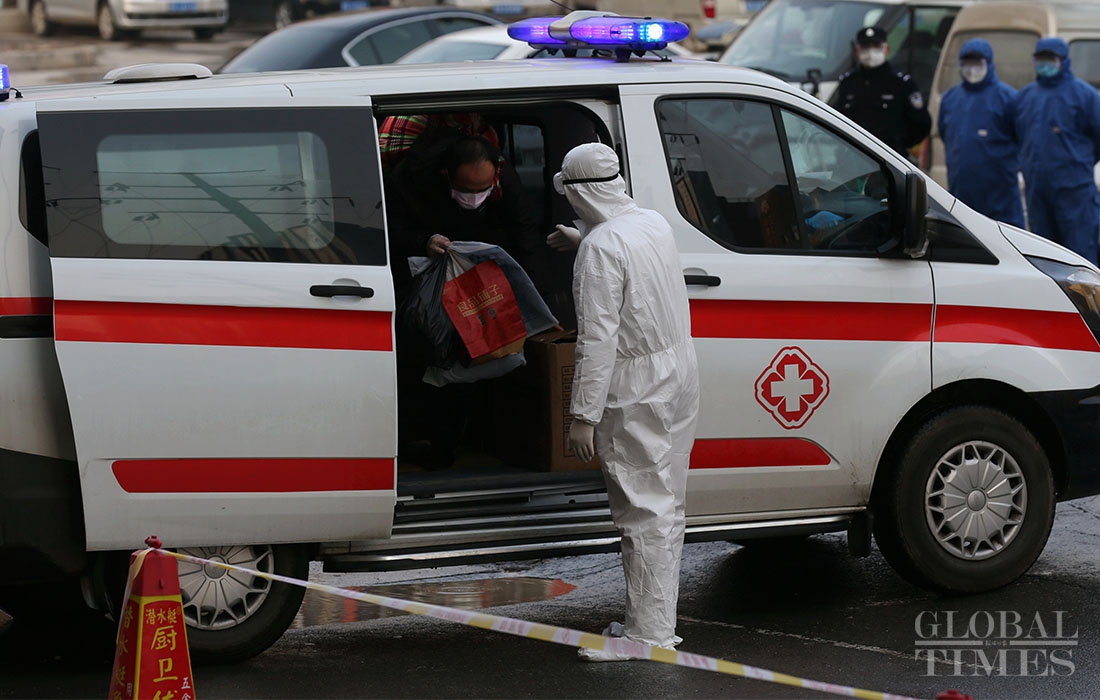
When others were queuing to get out of Wuhan just ahead of January 23 last year, Gao Gao (pseudonym), a nurse who works in a local hospital, was getting in.
After she got the message from Wuhan's health department notifying all medical workers about a shortage of personnel and materials in Wuhan hospitals, Gao snuck out of her parents' house in neighboring Ezhou and drove alone to the epicenter.
"The road to Wuhan was empty. And people from every checkpoint I passed told me 'Be careful' once they knew I was heading to Wuhan. My heart sank deeper and deeper when I heard them say so."
Gao found sealed-off Wuhan resembled a person in a coma; only hospitals were "unusually active." She immediately devoted herself to work after arrival. The first patient she attended to was an 83-year-old who was just discharged from the ICU after testing negative for the virus. It took Gao, who usually works in an administrative office, two hours to change diapers for the elderly patient. "My clothes were soaked with sweat in winter."
After her first day's work, Gao discovered she got more than 30 unanswered calls from her parents. She faced torrents of scold from them, who just found out she went back to Wuhan when she answered their call. "They were angry and worried. They were crying, and so was I."
In the end, Gao's parents calmed down and told her to "Be careful."
Now that a year has passed, Gao said it's still hard for her to watch movies that retell Wuhan's lockdown stories. "The scar is still here. Wearing masks, washing hands and temperature tests are now the same habit as taking your phone out with you in Wuhan. Even coughing on the subway will scare people around you away. We were hurt badly; thus, we know better how to protect ourselves," said Gao.
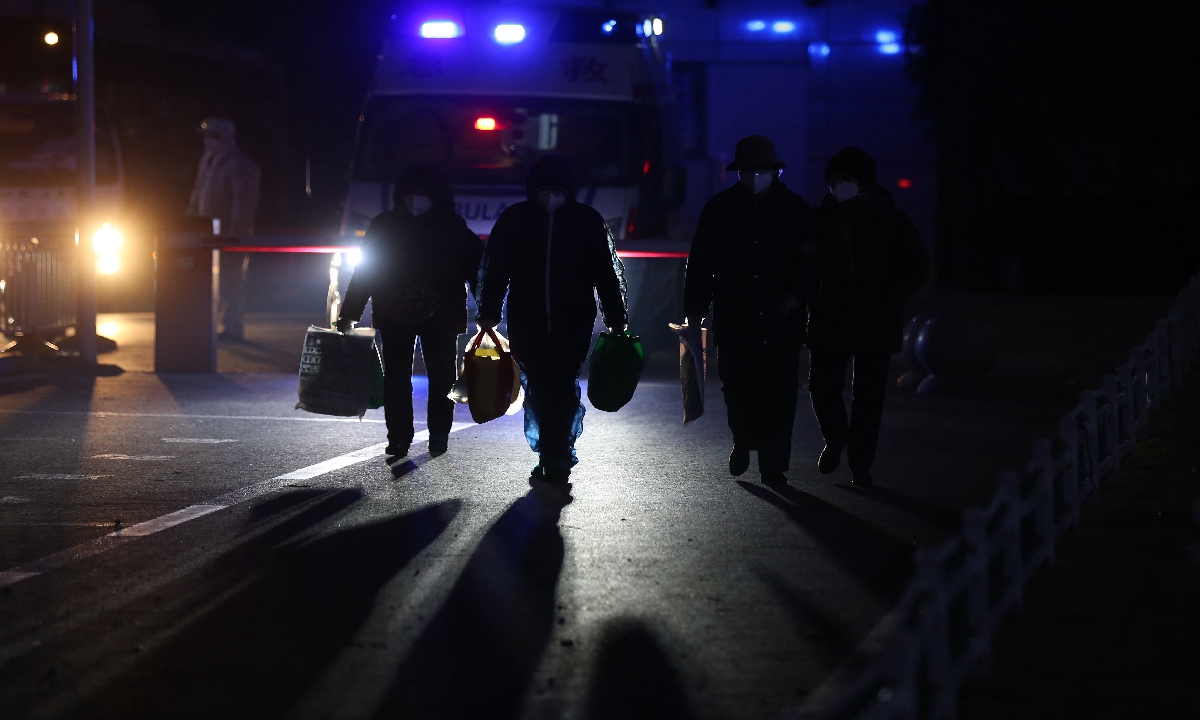
Although Wuhan's announcement to seal off the entire city shocked the whole world like lightning in a clear sky, Wuhan local Chen Jing did not take it seriously upon first hearing it. "I never experienced lockdown. I did not even know how it works. How are you going to put a city of 11 million under quarantine?"
His questions were immediately answered when he was told not to step out of his home. Later Chen himself also contracted the coronavirus in early February, but he gave up the chance to be admitted to hospital for an elderly man whose condition was worse, and chose to stay in a quarantine hotel.
The decision of sealing off Wuhan confused Chen at the very beginning. But then he changed his mind after he saw how Western countries, especially European countries and the US, mishandled the pandemic, "which made people dying every day a new normal."
"I know many Western countries tried to copy Wuhan's lockdown method. But did they keep their virus carriers from wandering around? Did their governments have as effective enforcement as we do?" asked Chen.
Chen said it is the Wuhan people's strength and unity that made the city once in the "eye of the storm" now the "safest city on earth." "Those Western countries have no right to lambast Wuhan, with itself being dragged with high daily records. What are these 'human rights' they are always talking about? Keeping people alive is the most import part of human rights," said Chen.
During the lockdown, Wuhan was not fighting alone. More than 40,000 medical workers were dispatched to help Wuhan, and the whole Hubei Province, since the outbreak began. Also, materials and life supplements were pouring into the central Chinese city from all over China, and even from the rest of the world.
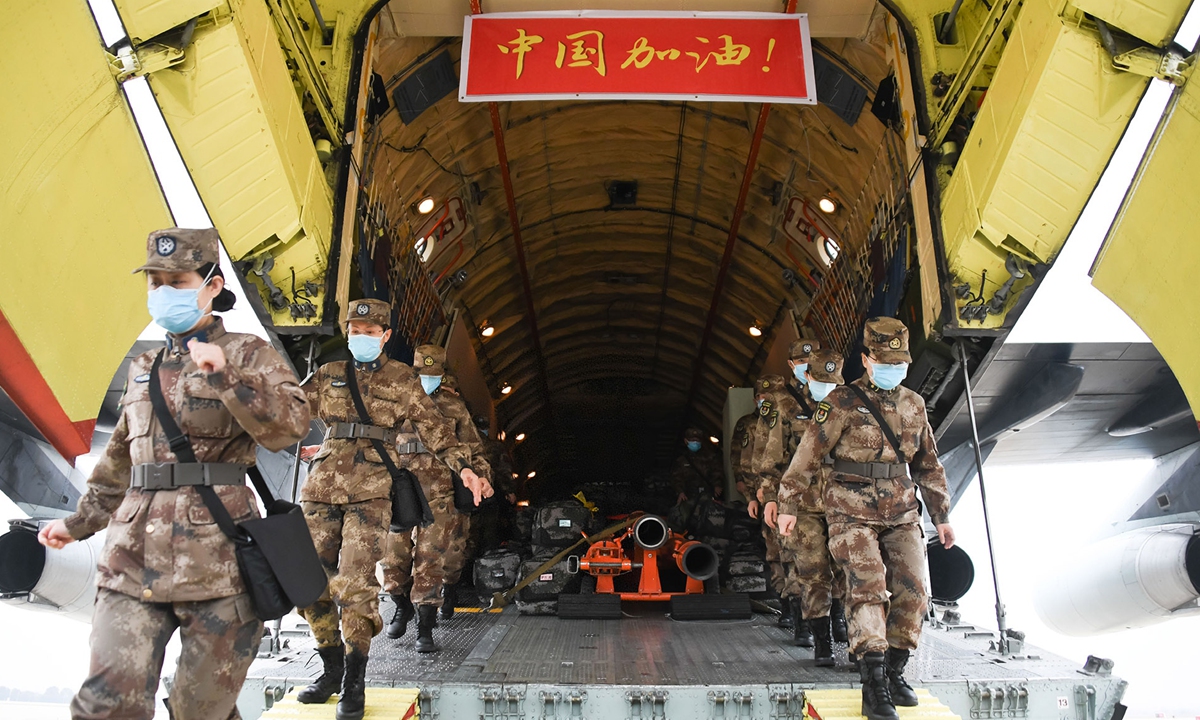
Chen Xingxu, founder of a Wuhan-based volunteer group focusing on providing help for coronavirus patients in the city, told the Global Times that he once escorted Yan Yiwei, a 1-month-old newborn who had contracted the virus, to Nanjing for treatment in early February when Wuhan was still under strict lockdown.
Chen said they drove past a checkpoint in nearby Anhui Province. The inspectors, who were leisurely talking and smoking by the road, suddenly stood up with high vigilance when Chen's car, with a Wuhan license plate, approached.
The inspectors shouted at Chen from a distance, "Keep your window ajar!" when he lowered the car window and tried to explain the situation. After hearing Chen's explanation, the inspectors let the car pass. "I heard them shouting 'Wuhan Jiayou [keep fighting, Wuhan]' behind me when I drove away," Chen said.
He said Wuhan people used to be aggressive and easily irritable. "It took an epidemic and a lockdown to expose that resilience, unity and never-surrender quality that has been buried deep in Chinese people's hearts. There were people who were dissatisfied about the lockdown in the early stages. But when the strict measures worked, when the Western countries one by one failed to contain the virus, more and more Wuhan people became staunch advocates of strict measures," said Chen.
A year on, when looking back at the decision to seal off Wuhan, many people in Wuhan and across China feel "grateful" for the government's decisive measures, which effectively and quickly stunted viral spreading. They believe it was incontrovertibly the best way to throttle the virus' fast transmission and that it saved many lives.
A day before the city decided to seal itself off on January 23, the number of COVID-19 cases was around 500. At that time, it was unclear how serious the epidemic was and how contagious the virus was, Wu Zunyou, chief epidemiologist at the Chinese Center for Disease Control and Prevention, told the Global Times, noting that such a wise decision reflects the foresight of the central government.
Wu pointed out that if Wuhan had not been locked down, there would have been several severe outbreaks in other places in China similar to that in Wuhan.
Wu said he was on a joint China-WHO mission on February 16 through 24, and conducted analyses with experts in the mission. He concluded that if Wuhan had not been closed, the number of infected people in China would have reached nearly 1.5 to 2 million by the end of February. It means that the decision prevented 1.5 to 2 million people from being infected and avoided some 60,000 deaths.
"At that time, the head of the WHO expert group accepted my assessment. Though he did not use specific figures in the joint mission report, he included a similar statement in the report," Wu said.
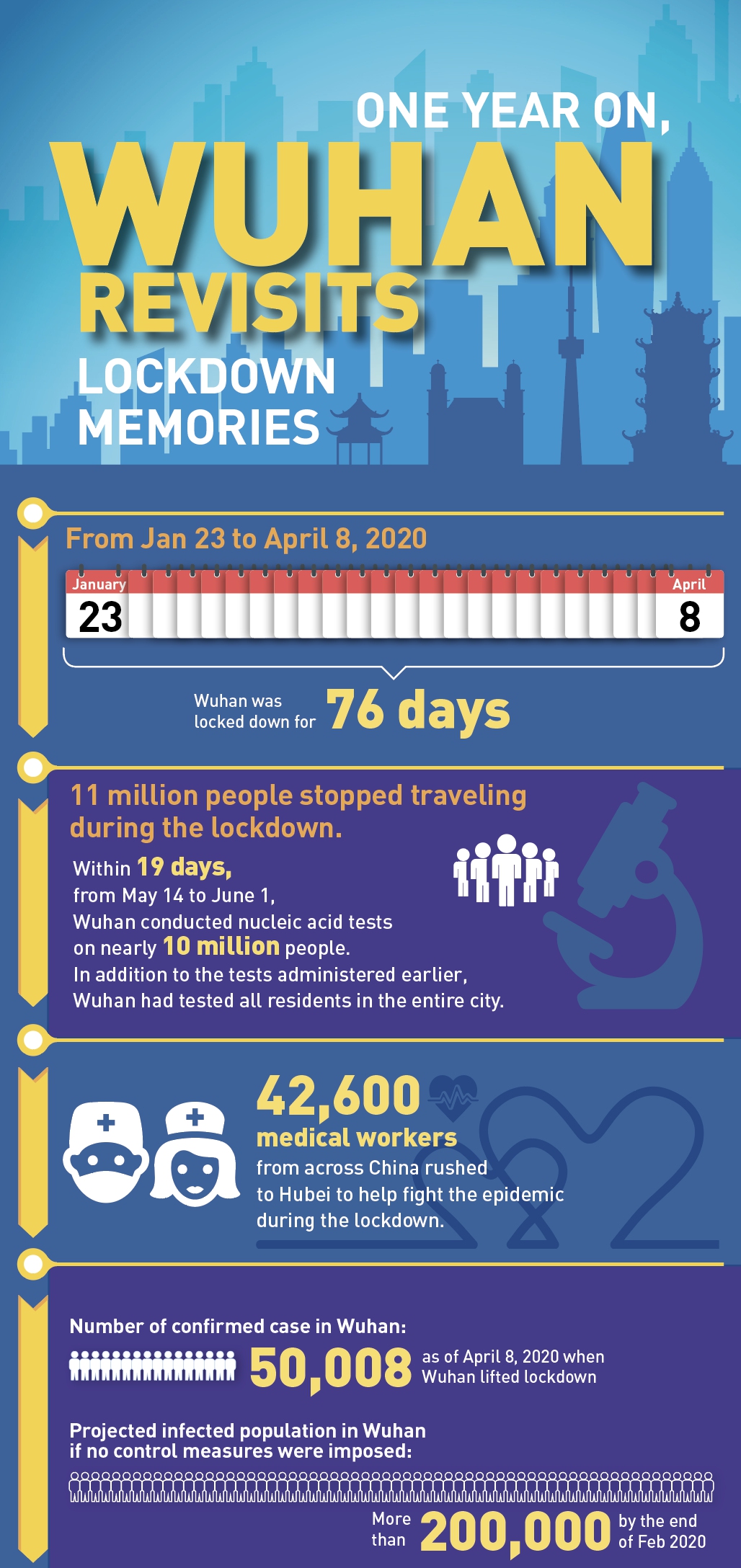
The instruction to impose traffic control and limit people's movement in Wuhan and Hubei was made by President Xi Jinping on January 22, according to the White Paper on fighting COVID-19: China in Action, issued by the State Council Information Office.
On January 22, Xi ordered the immediate imposition of tight restrictions on the movement of people and channels of exit in Hubei and Wuhan, the white paper said.
The decision was made two days after evidence was announced, revealing that the virus transmits via humans.
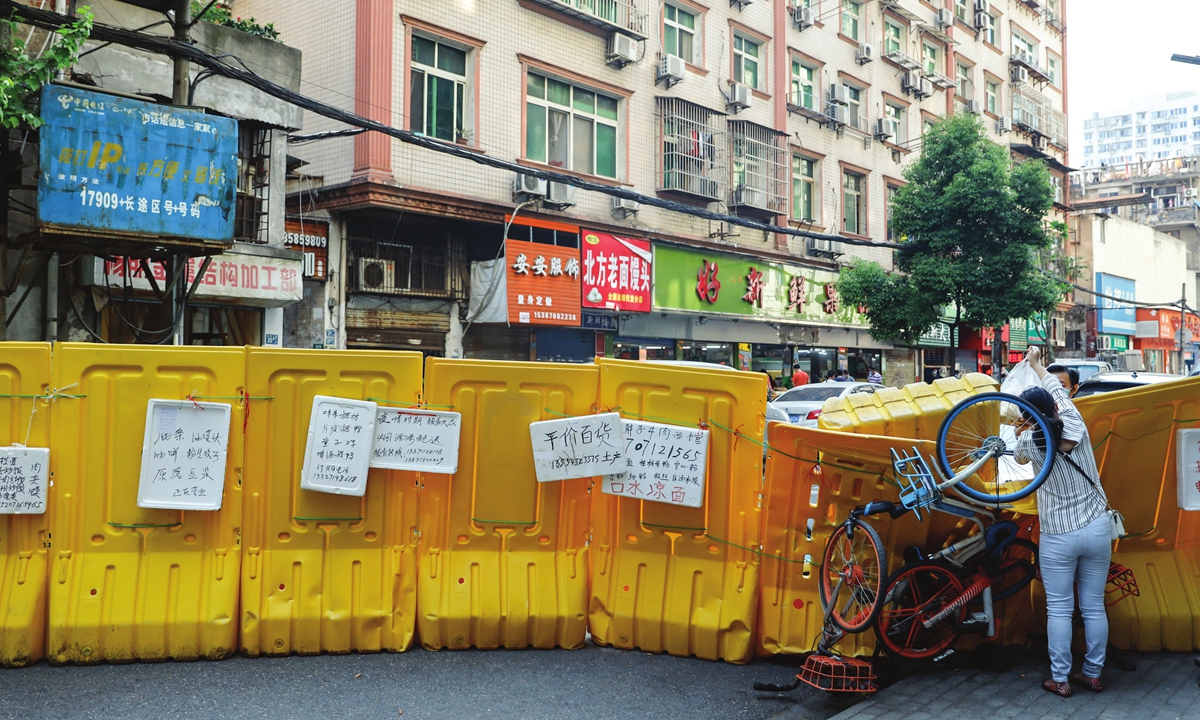
The lockdown mode, despite previously being criticized by some Western countries as "draconian," has now become an enduring tool everywhere to quell the virus.
Yet while Wuhan and many parts of China have shaken off the epidemic and returned to normal life, countries in Europe and the US are still struggling to deal with the virus and even "lockdowns" have not been entirely successful.
Italy, which also went through several rounds of lockdown, has registered 81,325 COVID-19 deaths since last February, AFP reported on Monday, noting that the Italian government issued a new decree extending curbs to keep a lid on infections. Italy's cases soared from October to January, from more than 400,000 to around 2.41 million.
Enrico from Lodi, Lombardy told the Global Times that negligence toward lockdown measures has fueled the increase of cases.
"This round of the lockdown was much lighter than we experienced in last spring, as people are now tired and trying to get back to normal. People assemble at friends' houses to have dinner, party outside to celebrate festivals. And the schools were not completely closed," said Enrico.
Another reason why the Western-style lockdowns achieved little success is that they relaxed the bans too soon, according to Yang Zhanqiu, deputy director of the pathogen biology department at Wuhan University. "They re-opened schools and restaurants when there are still hundreds or even thousands of cases. It's like a forest fire: If it is not put out completely, the remaining sparks will eventually cause a new round of disaster."
Meanwhile, China is improving its model for better "precise control management."
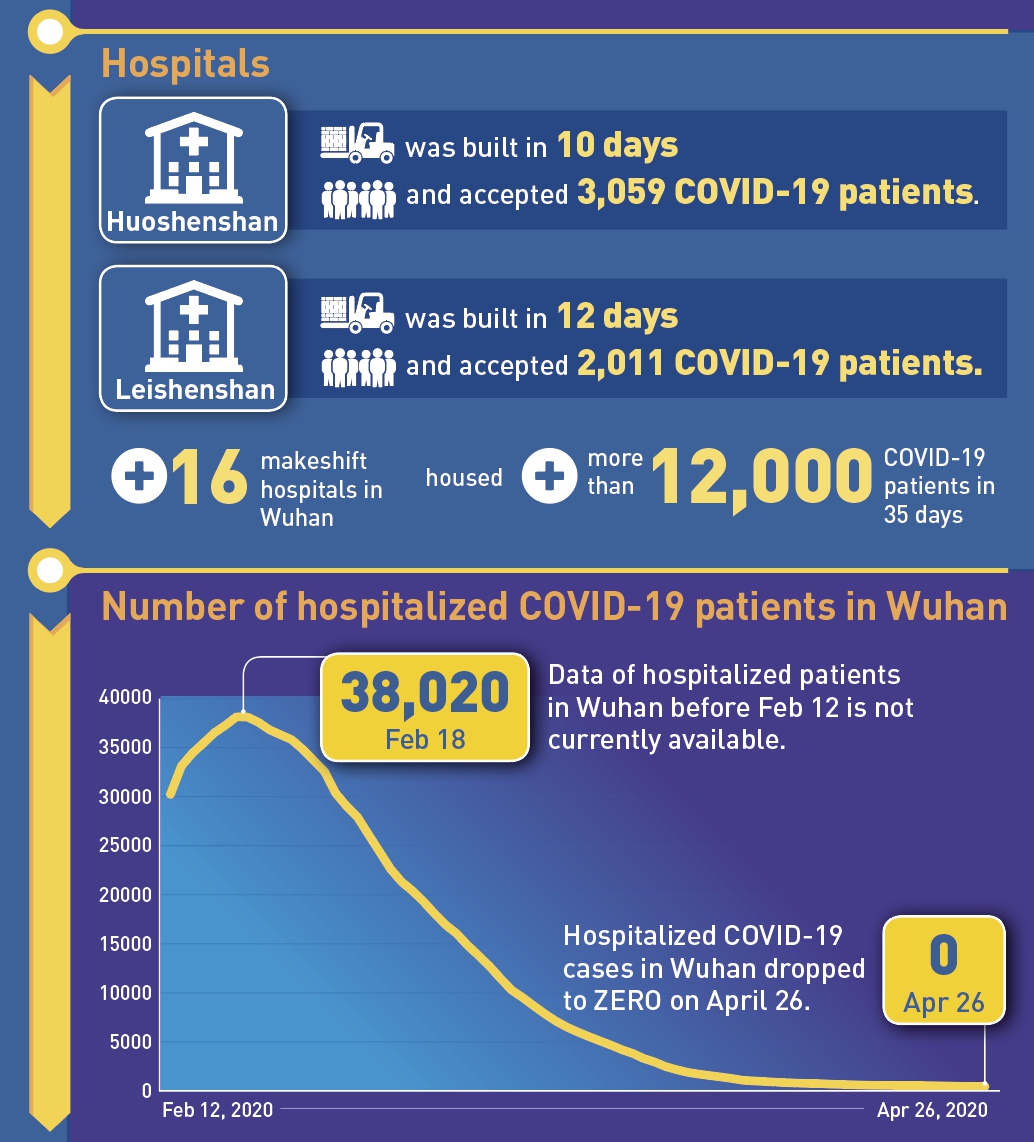
After the recent flare-ups in North China, local governments adopted measures to curb the spread of the virus. Yet the lockdown measures in Hebei cities - Shijiazhuang, Xingtai and Langfang - were not as harsh as in Wuhan. Residents in Hebei could go downstairs to pick up their deliveries or purchase food from stores inside their residential communities. The cities later suspended public transportation, such as the subway and buses; taxi services were also stopped, besides the shut-down of traffic to and from the cities.
During previous outbreaks in cities such as Dalian, Qingdao and Chengdu, the lockdown measures were imposed on specific community compounds or a district, instead of the whole city.
Wuhan's lockdown reached a city-wide scale because there were outbreaks all over the city, with causes that were unclear, and there was a lack of effective testing methods, said Yang.
The virologist noted that post-Wuhan outbreaks have been on a far smaller scale, with clear sources, making them easier to control. "As long as we quarantine all that should be quarantined, such as close contacts, confirmed cases and silent carriers, there's nothing to worry about."
Wang Guangfa, a respiratory expert at Peking University First Hospital, told the Global Times that pinpointing contagious sources and cutting off the root of infection are principal devices in stemming a viral spread. "So now, with no effective cure in sight and a mass vaccination underway, lockdown measures still remain the quickest and most useful way to put off the infection."
He also gave credit to China's swift response to later outbreaks in other cities. "Wuhan's citywide lockdown was no longer seen, because other cities also took the lesson, [which is to] stay vigilant against the virus, and took swift responses whenever a case emerges. For contagious diseases, you have to nip the infection in its bud."
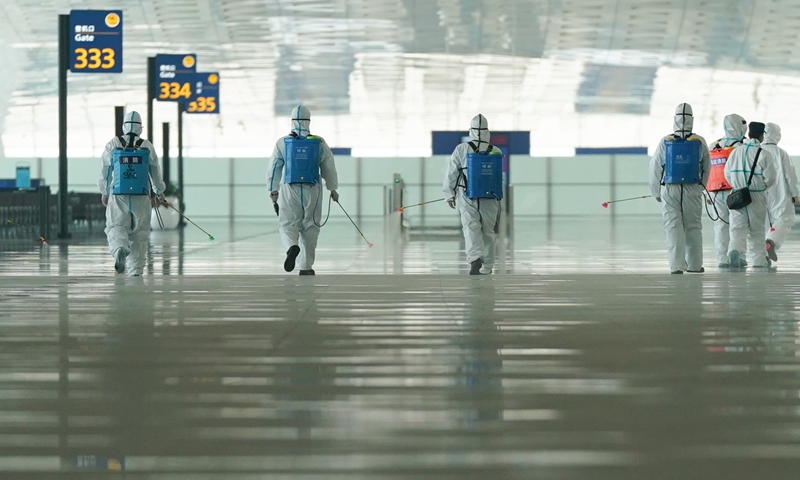
In cities where mini-outbreaks were reported, such as Dalian and Qingdao, swift responses were routinely referred to even with relatively low numbers of infections, such as a rapid roll-out of massive nucleic acid testing across the whole city with short notice, and ensured compliance with government measures, such as totally sealing off residential compounds.
In the eastern Chinese city of Qingdao, where just a few cases were reported in October, the city completed citywide tests within five days, taking samples of over 10 million residents.
"Given the huge number and high density of Chinese population, we have proven that [these measures] are very effective," Mi Feng, spokesperson at the country's National Health Commission, said in a news conference.
Wang also noted such "precious virus prevention" methods also helped China steer clear of shutting down economically significant cities like Beijing, despite substantial flare-ups.
"Lockdown is not the usual way to contain an epidemic. But now, with no further medical progress made in treating the virus, early and strict quarantine measures means saving cities from repeating Wuhan's plight last year," said Wang.
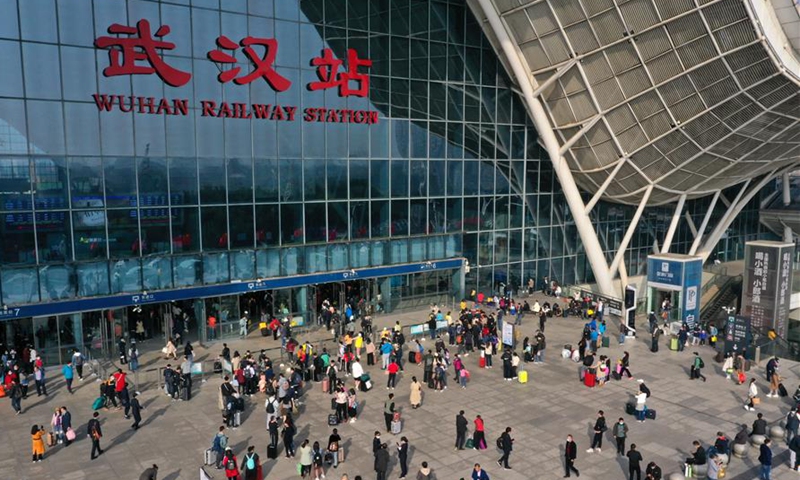
If China's economic growth of 2.3 percent last year despite the headwinds of COVID-19 can be considered a silver lining to the virus-dragged global economy, then the country's central city of Wuhan, the first city that experienced an unprecedented lockdown at the beginning of 2020 after an epidemic outbreak, could serve as a model for other Chinese cities and the world to emerge from the health crisis even stronger.
Despite tremendous hardships in recovering its industries and enhancing local people's consumption power that have been hit severely by the virus, which brought Wuhan's economic performance ranking below most of its peers, the city has already returned to its vigor and strived to catch up this year.
Wuhan's economic output, which accounted for around 37 percent of the province's total, is estimated to record negative growth of 6-8 percent for the full year of 2020, based on the province's GDP growth rate of negative 5 percent in the same period, Dong Dengxin, director of the Financial Securities Institute at Wuhan University of Science and Technology, told the Global Times on Friday.

"Compared with a negative growth of 40.5 percent in the first quarter of 2020, when the ravaging virus grounded all economic activities to a halt, the city's robust recovery in the second half is unimaginable and stunning," Dong noted.
Wuhan's GDP data is expected to be unveiled soon.
Effective prevention measures, people's raised awareness of social distancing and wearing masks, and local enterprises' quick response to coordinate resources to guarantee the supply chain have played a key role in the virus battle and Wuhan's fast recovery after the 11-week lockdown that put the city in virtual quarantine, observers said.
"I still remember the day I got the news that the railway was closed and we could not return to our hometown. Things suddenly became gloomy and our worry over the virus was also amplified," Wang, a frontline manager in charge of production in an auto firm in Wuhan, recalled.
Following the end of Spring Festival in February last year, Wang said his team started to meet online each day discussing preparations for resuming production while waiting for further notification from the local government.
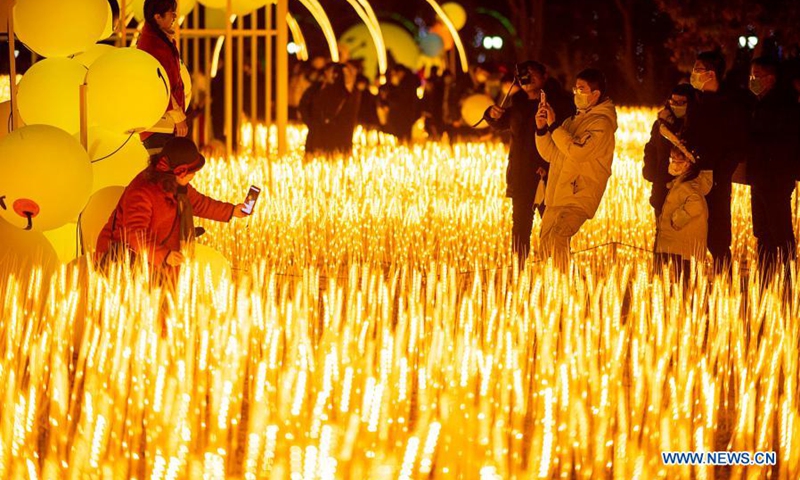
"To our relief, our facility's output climbed back to pre-epidemic level within just a few days after we officially resumed production in April, although there were some obstacles caused by a lack of workers and auto components," Wang said.
He estimated a positive year-on-year growth of production in 2020 for the auto firm he works for. "And I bet we are not alone. Some peers in the industry would also achieve that."
Wang also expressed some sadness over his thinning pocket. "Our family income shrank a bit last year and we spent less on consumption."
Latest data showed that Hubei's per capita disposable income in 2020 slid to 27,881 yuan ($4,308) compared with 28,319 yuan of the previous year due to the virus' impact, the only province that recorded a negative growth in the Chinese mainland. Shanghai topped the list with 72,232 yuan.
Many netizens last year expressed their willingness to go sightseeing in Wuhan, the heroic city, boosting local tourism from freezing point in the first quarter to peak in the second half.
Within a week since the lockdown lift on April 8, tourism ticket searches for Wuhan increased by nearly 70 percent. Thanks to the tourism campaign launched in August, visitors to the city surged to a peak.
Shen Dongfeng, general manager of Wuhan's Jiuzhou Travel Agency, told the Global Times that "orders began picking up slowly in June and then accelerated since August. From September to the end of last year, recovery was in full swing."
Official data released on Tuesday showed Hubei's GDP contracted by just 5 percent last year to 4.34 trillion yuan ($670 billion), beating economists' expectations of a double-digit decline. It is the only province that recorded a negative year-on-year GDP growth among the 18 provinces and municipalities that have so far announced their economic performance.

For Wuhan, its GDP from January to September 2020 reached nearly 90 percent of the same period the previous year. The decline of 10.4 percent in the first three quarters was an improvement from the 19.5 percent decline of the first half.
"The city's GDP growth for the full year of 2020 was estimated near the level of the province - minus 5 percent," said Ye Qing, deputy director of the Statistics Bureau of Hubei Province.
Holding an optimistic view of Wuhan and the province's economic outlook, Tian Yun, vice director of the Beijing Economic Operation Association, believes their GDP will achieve double-digit growth in 2021.
Different from previous crises, COVID-19 has made a heavier blow to supply. Looking back, Wuhan's resolute and timely lockdown was such a swift reaction to the emergency. With effective virus prevention measures in place, it accelerated the pace to put work resumption on the agenda. Thus, the supply side is guaranteed, Tian told the Global Times on Thursday.
In this sense, Wuhan serves as a model for both domestic and foreign cities to follow, Tian pointed out. In addition, the city has not only survived but also turned the health crisis into an opportunity to grow stronger: improved social governance and public health, industrial upgrades and becoming more digitized, making headway to becoming an international metropolis.
